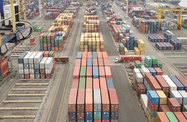A surge in gas exports will set Papua New Guinea on course for an economic boom in 2015 with some estimates putting GDP growth at a stellar 21%. However, tumbling oil prices are likely to take some of the shine off export receipts, limiting the government's ambitious plan to slash debt.
The 2015 budget, unveiled in November, projects 15.5% GDP growth for the coming year. This is approaching double the official forecast expansion for 2014 of 8.4%, with growth this year to be fuelled largely by the commissioning of a $19bn ExxonMobil-led liquid natural gas (LNG) development, after shipments began from the initial phase in May.
Some projections are for even higher GDP rates − the Asian Development Bank (ADB) forecasts 21% − factoring in that 2015 will be the first full year of LNG production and exports.
Exxon Mobil said the facility, with its processing and export hub located outside Port Moresby, reached full capacity at the end of July, about five months ahead of analyst expectations. It has an annual output capacity of 6.9m tonnes of LNG.
Non-energy sectors cooling
Beyond the resource sector, activity was lacklustre in 2014, with some sectors even in decline as the spill-over from LNG pipeline construction dissipated, giving rise to concerns these areas will continue to underperform in 2015.
The pace of expansion in construction, logistics and infrastructure delivery segments had shifted up a gear in recent years when major investments were put in place to facilitate the extraction, transfer and processing of the main flow of gas production.
ADB sees growth outside mining and energy at just 1.6% in 2014, with construction forecast to contract by 6.4%. It noted that the government needs to make structural reforms to enhance productivity in these sectors as well increase employment.
Spending cuts
With energy prices nose-diving in global markets due to a supply glut and weak demand, the full extent of PNG's future gas revenues remains uncertain.
An added worry is that while oil trades at less than half the price levels of last June, the government is unlikely to be able to claw back the public debt level to its forecast 27.8% of GDP this year after breaching the 35% ceiling in 2014.
Prime Minister Peter O’Neill said at the end of December that the government is considering a sovereign bond to debut in 2015 on international debt markets.
The government has committed to reducing spending by 6% per year in 2016 and 2017, after a 7% increase budgeted for 2015.
Spending cuts will help lower inflation, which is forecast at 5.5% in 2015, down from an estimate of 5.9% for 2014. High government expenditure, combined with the kina weakening against most major currencies, has contributed to the re-emergence of inflation as a prine concern.
Debt reduction
The ADB said in December that debt reduction is essential for PNG to restore its fiscal buffers and ensure the economy is better protected against external shocks.
The bank estimates that government revenue will increase at 4% per year over the next three years due to declining global commodity prices, compared with an average revenue growth of over 15% in the past four years.
A reduction in debt would likely please investors, especially after a warning by Moody’s in June that PNG had seen a marked deterioration in its fiscal and debt levels over the past two years. Despite this, Moody's maintained its B1 rating and a stable outlook, saying it expected the government to undertake fiscal consolidation in line with its medium-term strategy.
Some government officials have played down concerns over falling energy prices and debt levels, with Treasurer Patrick Pruaitch saying in December that most of the country’s LNG exports had their pricing structure locked into long-term forward sales contracts.
However, the Governor of the Central Bank Loi Bakani, expressed his concerns recently regarding the fall in oil prices which will: “feed through to lower domestic fuel prices and domestic inflation, it can adversely affect oil export revenues and taxes paid to Government in 2015.”
The governor stated that a large portion of the revenue increase, as highlighted in the 2015 budget, is expected to come from the mining and petroleum taxes in addition to LNG dividends. “Given the significant decline in oil and gas prices, the tax revenue target may not be achieved if some portions of the gas sales are not locked in forward contracts,” he added.
Another effect of lower energy prices could be to slow down exploration activities and development of new reserves in the next few years, at least until a rise in demand drains away the excess supply in the market. Extensive seismic testing and preliminary drilling work was conducted throughout 2014, with new reserves being identified in a number of regions, including the Gulf Province, although it may be some time before these deposits begin to be exploited.

